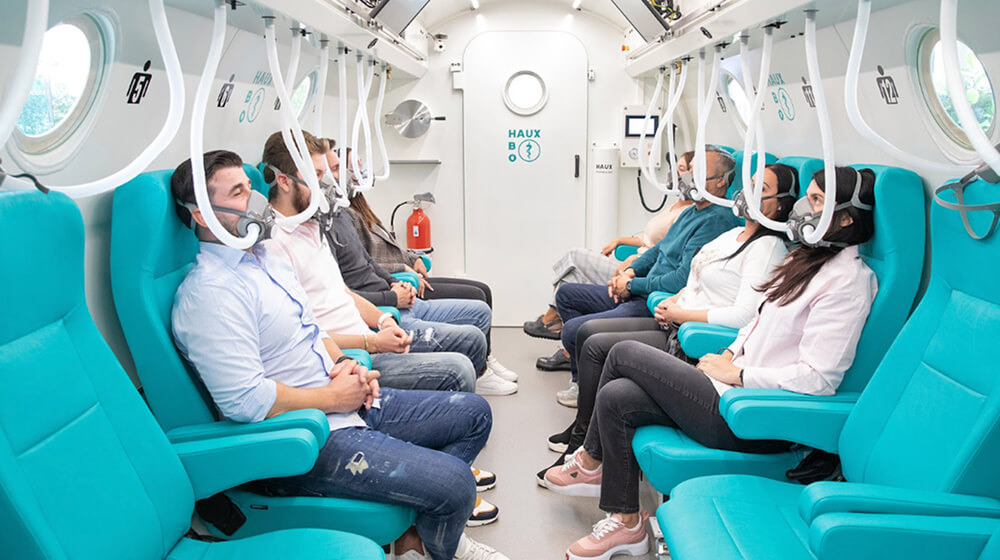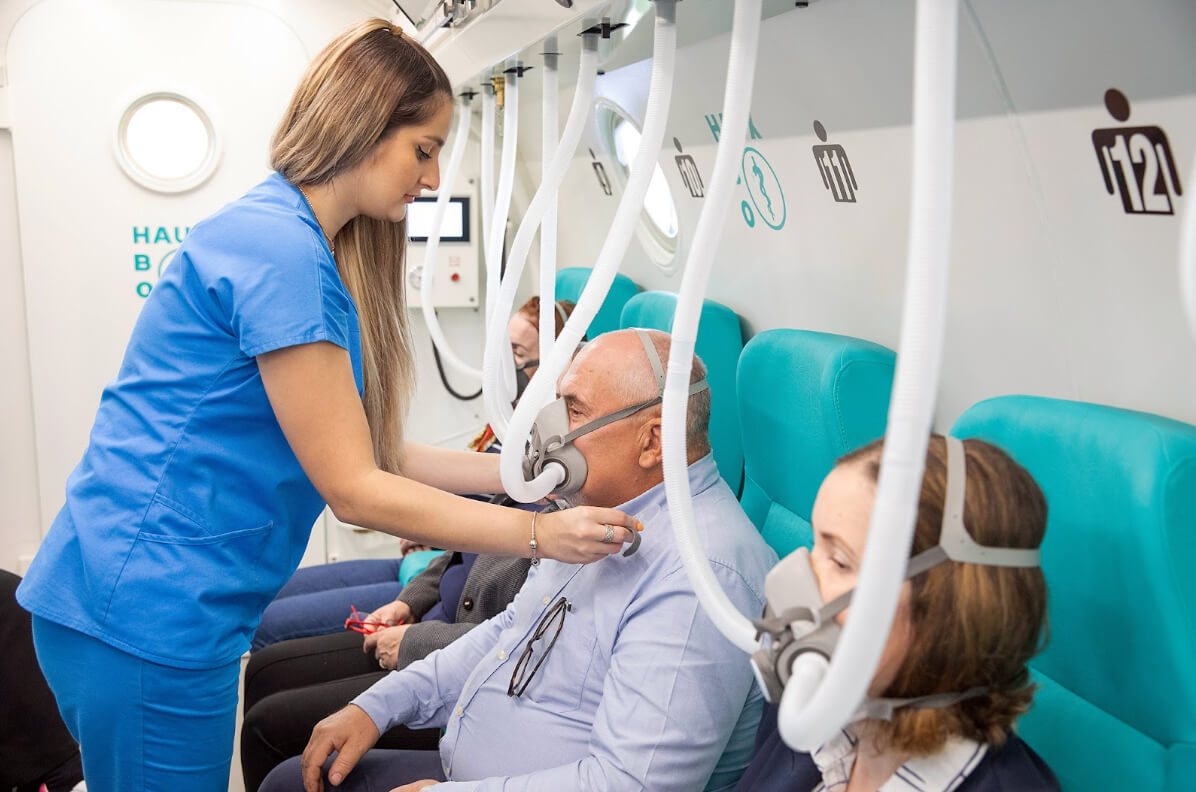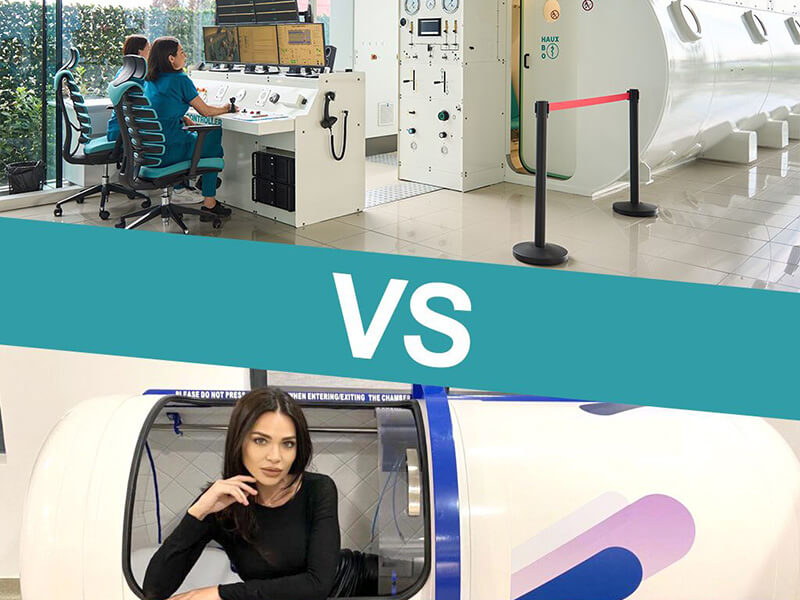
Article reviewed by: Dr. Sturz Ciprian, Dr. Tîlvescu Cătălin and Dr. Alina Vasile
Article updated on: 21-04-2025
Hyperbaric therapy: an advanced solution for osteoradionecrosis
- What is osteoradionecrosis and why it occurs after radiotherapy
- How the correct diagnosis is established
- HBOT: how it works and why it's effective
- Treatment plan – how therapy proceeds
- Combination with other forms of treatment: the key to success
- When hyperbaric therapy is recommended and who can benefit
- A step toward real recovery
For those who have undergone radiotherapy in the head and neck area, osteoradionecrosis can seem like an additional blow after a tough battle with cancer. We're talking about a serious complication in which the bone, most often the jaw, loses its vitality and ability to heal. The good news is that you're not alone in facing this challenge. In recent years, medicine has made great strides, and one of the most effective solutions is hyperbaric oxygen therapy (HBOT). With solid clinical support and real results in hospitals around the world, this therapy becomes a reliable ally for recovery, comfort, and a life with less pain.
What is osteoradionecrosis and why it occurs after radiotherapy
Osteoradionecrosis is one of the most serious post-radiotherapy complications, particularly affecting the lower jaw. It appears over time, often months or years after the completion of oncological treatment. The bone, deprived of oxygen and adequate vascularization, becomes fragile, unable to heal or fight against infections. Patients may experience persistent pain, inflammation, exposure of bone in the oral cavity, and difficulties in eating or speaking.
It is estimated that the number of osteoradionecrosis cases is increasing, along with wider access to oncological therapies. Although there are no centralized official statistics, specialists estimate that between 5% and 15% of patients who receive radiotherapy in the head and neck area develop variable forms of osteoradionecrosis.
How the correct diagnosis is established
Diagnosing osteoradionecrosis involves a complete evaluation, combining clinical examination with imaging investigations. X-rays provide an overview, but the most useful tools are computed tomography (CT) and magnetic resonance imaging (MRI), which highlight the degree of bone damage and the extent of lesions. Bone scintigraphy is sometimes used to detect early metabolic changes in the bone. Based on this data, the doctor establishes the severity level and treatment plan.
HBOT: how it works and why it's effective
Hyperbaric oxygen therapy consists of breathing pure oxygen in a pressurized chamber, at a pressure 2–3 times higher than atmospheric pressure. Under these conditions, oxygen no longer circulates only through hemoglobin but dissolves directly into plasma, quickly reaching the affected tissues.
What does this mean for a patient with osteoradionecrosis? More oxygen means regeneration. New blood vessels form, collagen production increases, and osteoblast activity is stimulated - the cells responsible for bone repair. Additionally, oxygen has an antimicrobial effect, which reduces the risk of infections in exposed areas. The result? Tissues that heal faster, better, with less chance of complications.
A study published in International Journal of Radiation Oncology highlighted a success rate of over 85% in reducing symptoms and healing lesions in early stages of osteoradionecrosis, after a protocol of 30–40 HBOT sessions.
In specialized centers offering hyperbaric oxygen therapy in Romania, patients who have benefited from hyperbaric oxygen treatment have reported not only pain and inflammation reduction but also improved masticatory function and better sleep quality.
A frequently encountered example is that of patients who, following surgical intervention to remove necrotic tissue, have included hyperbaric therapy in their post-operative plan. Results have shown accelerated wound healing and a reduction in post-surgical complications.

Treatment plan – how therapy proceeds
Usually, a standard protocol may include from 10 to 60 sessions, conducted daily, Monday through Saturday. Each session lasts approximately 120 minutes, and the patient is constantly monitored by a medical team. The treatment is personalized according to the severity of the injury, the body's response, and other associated conditions.
In general, patients tolerate the therapy well, and side effects are rare, the most common being pressure sensations in the ears or mild temporary fatigue.
Combination with other forms of treatment: the key to success
HBOT is most effective when integrated into a complex therapeutic plan. Surgery remains essential in advanced cases, where necrotic bone must be removed. Antibiotics are often prescribed for preventing or treating infections. Nutritional supplements, especially those with vitamin D, calcium, and collagen, can support bone regeneration processes. In parallel, impeccable oral hygiene and regular visits to the dentist are recommended.
When hyperbaric therapy is recommended and who can benefit
Patients with a confirmed diagnosis of osteoradionecrosis, especially those who have not responded to classical treatments or are preparing for surgical interventions, are ideal candidates for hyperbaric oxygen therapy. Also, therapy is useful in cases where postoperative complications occur or when recovery is slowed.
Contraindications are few but important, such as untreated pneumothorax or certain severe lung diseases. Therefore, it is essential that therapy is conducted under the supervision of an experienced medical team.
A step toward real recovery
For many patients, the news of an osteoradionecrosis diagnosis comes with fear and uncertainty. But access to modern therapies, such as hyperbaric oxygen therapy, restores hope. Recovery is not only possible but becomes tangible when advanced medicine is combined with an empathetic and personalized approach.
If you have undergone radiotherapy and are facing persistent pain or changes in the jaw, do not delay evaluation. There are centers where cutting-edge medicine works together with you for a clear objective: to regain your health, comfort, and confidence in each day.




